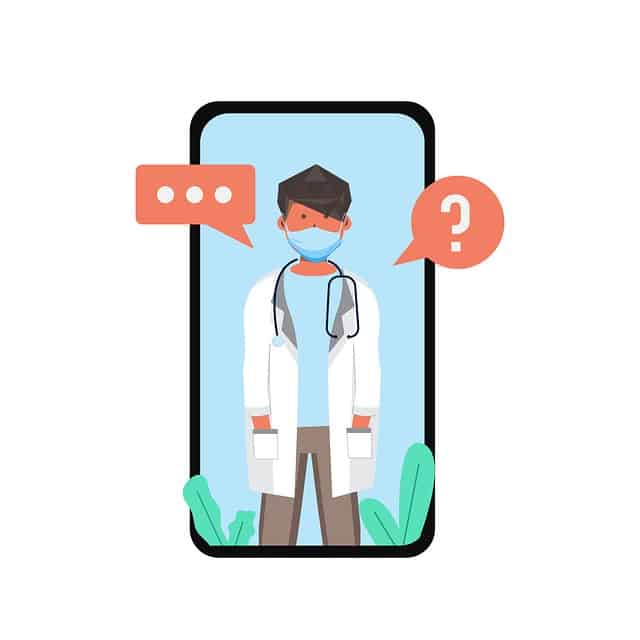Covid-19 has not only transformed our lives but also had a significant impact on the healthcare industry. Due to the pandemic, sectors like telemedicine and healthcare AI experienced a considerable boost in recent years.
Medical care mobile apps became the most effective way of connecting with patients in times of lockdown and quarantine limitations. That is why building a robust and secure healthcare app integrated with modern medical services is crucial.
Here’s an extensive guide on building a healthcare app that is not only helpful and convenient but also safe for storing your sensitive data.
Tips for Building a Secure Healthcare App
Do Research on Regulatory Compliance
With information technology evolving on a day-to-day basis, its impact on the industries also continues to transform. Technological progress has significantly influenced healthcare as well.
To handle and regulate confidential patient data, legislative bodies throughout the world have implemented laws and policies. Depending on the region it’s used in, the app’s functionality, the transmitted information, and stored data can fall under various compliances and regulations.
When developing a medical mobile app, companies need to ensure their app meets specific regulations. If multiple facilities and personnel use the healthcare app, it will likely adhere to several compliance areas. Only then can governments deem it safe for use by the public.
For example, medical applications published in the U.S. that store and transmit medical information and protected personal should comply with HIPAA. While developing an app for the European market, you must follow the GDPR requirements. In Canada, PIPEDA governs the security of healthcare information systems.
The protected health information usually includes:
- actual medical information
- appointment dates
- insurance-related data
- medical histories
- patient’s personal information, such as contact info, demographic details, social security numbers
- prescription history
- other sensitive information that should not be made public
Use Encryption for Medical App
Publishing an app and encouraging users to be engaging with it requires deep trust between the two parties. Especially when it comes to health-related information, patients mustn’t hide any essential data from medical representatives and facilities because of a lack of trust.
Confidentiality is key in the relationship between users and providers. That is why all data that is used by the mobile application should be encrypted. Encryption helps scramble your data so that nobody can decipher it, especially the hackers. This procedure is performed for incoming and outgoing data. Encryption should be applied to:
- all channels of communication
- databases
- emails and other messages
- hard drives
- medical files
- any other data storage or transmissions
This way, even if data gets stolen, it will be impossible to get any use out of it because deciphering the data would require a specific encryption code owned by patients and medical facilities.
Several dedicated protocols like SSL and TSL can help encrypt data and ensure confidentiality and safety for both parties involved in the process.
Implement Multi-Factor Authentication
Multi-factor authentication is requisitory to protect the patient’s personal account from unauthorized entry and security breaches. In MFA, you need to provide several pieces of evidence to ensure you’re the owner of the account. Typically, it includes a strong password and additional components, including fingerprint scanning, voice identification, or the good old text message comprising a secret code.
Test the Healthcare App for Bugs and Security
Launching an incomplete application full of bugs is the quickest way to lose customers and ruin your app, as well as the company’s reputation. Fortunately, nowadays, code is becoming increasingly secure as developers employ testing at all stages of the process.
To ensure your developed app is safe, developers must conduct regular quality assurance and security testing. These tests help exploit vulnerabilities and areas that require improvement in existing operating services.
It’s an effective way of spotting application flaws, poor configurations, improper interfaces, and risky end-user operations. Listed below are the most common security issues you should look out for:
- bad security decisions via untrustworthy inputs
- broken or incorrect cryptography
- client-side injection that leaves data vulnerable
- insecure data storage
- inadequate transport layer protection
- shortage of binary protections
- poor authentication and authorization services
- unintended leakage of data due to inadequate security
- weak server-side control
Test and improve your healthcare app several times to ensure it’s completely safe against hackers, social engineers, and MITM attacks. It’s also vital that you constantly maintain your app to ensure it’s up to date with the latest technological advancements.
The Bottom Line
Once you release your health care app, make sure that a strong support team tracks all essential lifetime metrics, receives alerts on key resource usage, and gets notified about security threats.









